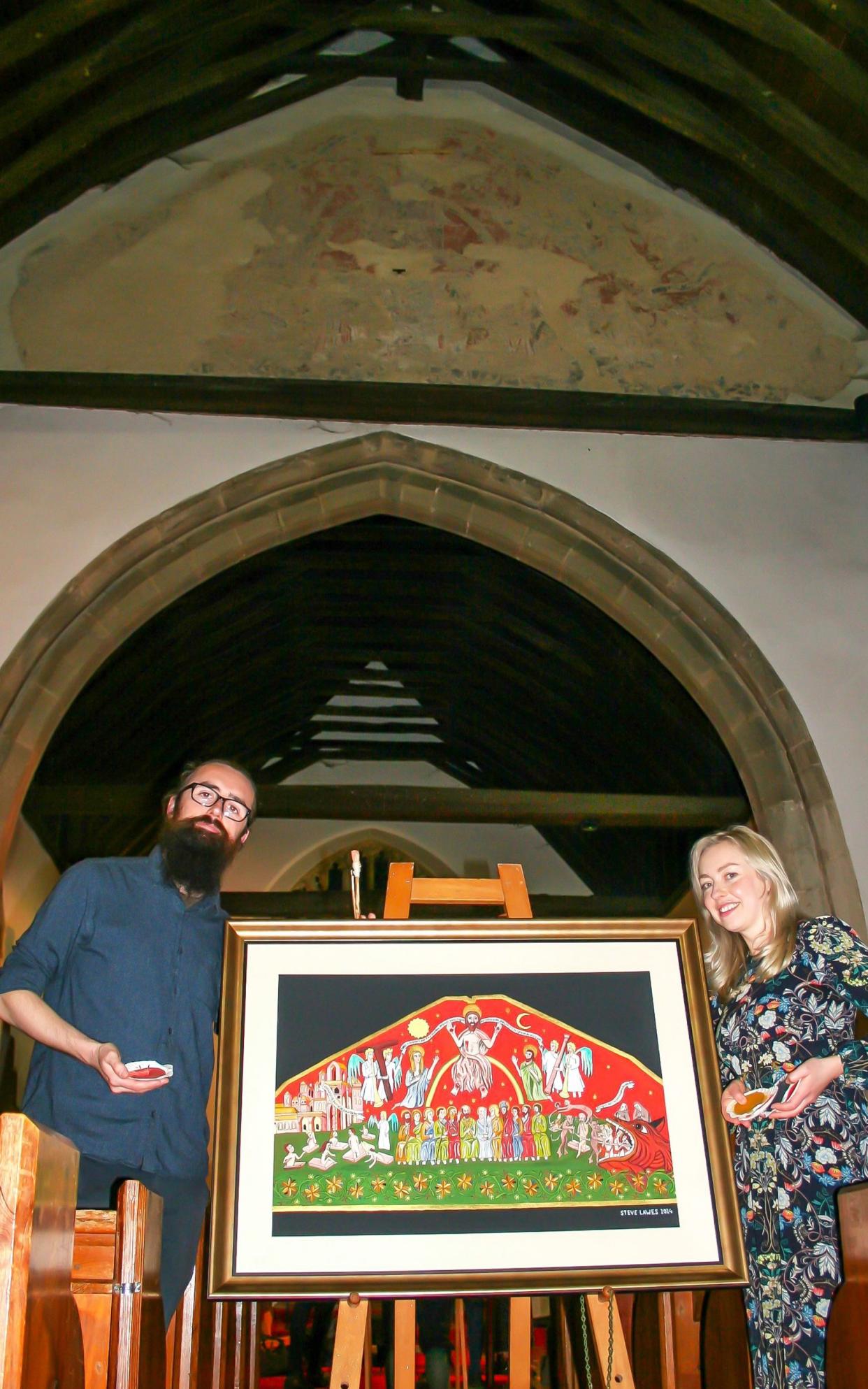First parish church Doom painting in 500 years unveiled

The first parish church Doom painting made with traditional methods in more than half a millennium has gone on display.
Before the Reformation these brightly-coloured depictions of Christ’s judgement were common.
They allowed illiterate worshippers to understand that sinning meant a journey to Hell, but righteousness meant eternal life.
During the 16th century they were considered a bit too Popish and the vast majority were plastered over or destroyed.
Now, at the rural St Mary’s church in Woodham Ferrers, near Chelmsford, Essex, a newly completed Doom painting can be seen.
It was based on the traces of the original that decorated the chancel arch and following close examination of those Doom paintings that remain.
The name Doom is derived from dom, an old English word for judgement.
Using authentic pigments, gold leaf and brushes made from hog and squirrel hair, Steve Lawes, a medieval art expert, painted a version of the original.
Like most Doom paintings it is a representation of the Last Judgement at Christ’s second coming, as described in Matthew 25:
“When the Son of Man comes in his glory, and all the angels with him, he will sit on his throne in heavenly glory.”
The painting depicts the righteous climbing from their graves to eternal life, and the unrighteous – including a clergyman and king – departing to their eternal punishment.
Other features include the Apostles without Judas, a citadel representing heaven and the jaws of Hell. Christ, bleeding from the nails and with a gaping wound in his side, is flanked by his mother Mary and John the Baptist.
Steve said: “The church’s original Doom it is thought was painted in the 1420s or 1430s and was plastered over during the Reformation.
“The Victorians uncovered it in 1884 but since then it has suffered further and it is now hard to discern.
“So it was a genuine thrill to be asked to recreate it using traditional techniques. A great deal of research had been done on the original with regard to the pigments used.
“And with the knowledge gained from examining the country’s more complete paintings I was able to interpret the Woodham Ferrers’ version.
“It is not as big as the original but I hope it captures the colour and drama and that it provides a sense of what worshippers would once have been looking at as they attended services.
“We are not used to our churches being decorated with bright coloured paintings, but it was once common.”
Nia McIntosh, a heritage consultant using money from the National Heritage Lottery Fund has overseen a wide Heritage Hub project at St Mary’s.
She said: “The original Doom has been through a lot over the years. It was damaged in a storm in 1989 and has deteriorated further despite conservation interventions.
“It’s now very hard to see which was why we wanted to find out what it had looked like originally and create a new version. We were able to with money from the Friends of Friendless Churches.
“My desire was to bring the painting to life for our visitors and congregation; to create more of an immersive experience and transport people back to the medieval period.
“Steve is an expert in this area and he examined the parts that remain of the original and studied documentary evidence from examinations since it re-emerged in 1884.
“Tests were done on the remaining paint to establish exactly what pigments were used and examination into extant Dooms enabled an interpretation which is as close as we can get.
“I’m sure there hasn’t been a Doom painting using traditional techniques created for a parish church since the Reformation.
“St Mary’s has other medieval paintings and decorations and we are currently hosting an exhibition and events to celebrate it.”
The exhibition, Doom and discovery; wall paintings in the medieval church, runs until the middle of June.
Other experts involved include Sara Charles, a medieval book production expert, who hand made the original recipe pigments and the brushes.

